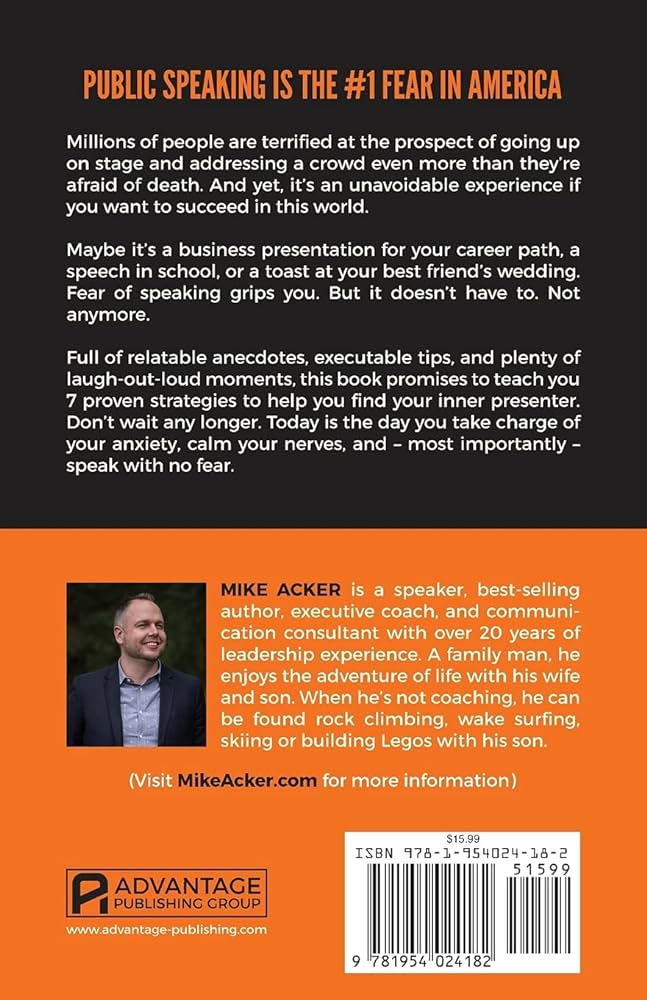Start Building Meaningful Connections Through Storytelling
Start building meaningful connections through storytelling by crafting compelling narratives that resonate with your audience. By sharing relatable experiences and emotions, you can establish a deep and authentic connection with your readers or listeners.
In today’s digital age, where attention spans are short and information overload is a constant challenge, storytelling has emerged as a powerful tool to captivate and engage your target audience. It allows you to convey your brand’s values, beliefs, and purpose in a way that is memorable and impactful.
Whether you’re an individual looking to connect with others on a personal level or a business aiming to build a loyal customer base, harnessing the power of storytelling can elevate your communication strategy to new heights. We’ll explore the key elements of effective storytelling and provide practical tips to help you start building meaningful connections through your narratives.
Why Storytelling Is Essential For Building Meaningful Connections
Crafting meaningful connections is crucial, and storytelling is the key. Through the power of storytelling, you can build strong bonds by engaging and connecting with your audience on a deeper level, creating a lasting impact. Start building these significant connections by harnessing the potential of storytelling.
The Power Of Storytelling In Communication
Storytelling has been an integral part of human communication since the beginning of time. It has the remarkable ability to captivate an audience, stir emotions, and create lasting connections. In today’s fast-paced and information-driven world, storytelling remains a powerful tool that can help you build meaningful connections with your audience.
Stories have the potential to create a deep sense of empathy and understanding between individuals. When you share a story, you invite others into your world, allowing them to experience your thoughts, emotions, and perspectives. This shared experience fosters a sense of connection, as your audience relates to the challenges, triumphs, and lessons you convey through your narrative.
:
Storytelling is not just a way to entertain or engage; it serves a much deeper purpose in building meaningful connections. Here are some reasons why storytelling plays a crucial role in connecting with your audience:
- Emotional resonance: Stories have the power to evoke strong emotions in your audience. By sharing personal anecdotes, relatable experiences, or inspiring tales, you tap into the emotional core of your readers and establish a genuine connection.
- Authenticity: Stories allow you to convey your authentic self. When you share your personal journey or the experiences of your customers, you demonstrate transparency and vulnerability. This honesty resonates with your audience, enabling them to trust and connect with you on a deeper level.
- Memorability: Facts and figures may be quickly forgotten, but a well-told story remains etched in our memories. By weaving your message into a narrative, you make it more memorable and easier to recall. This is particularly crucial when you want your audience to remember important information or key aspects of your brand.
- Shared values: Through storytelling, you can align your brand with the values and beliefs of your audience. When you share stories that reflect these shared values, you create a sense of kinship and establish a strong bond. This connection drives your audience to not only engage with your content but also advocate for your brand.
- Engagement and relatability: Stories are inherently engaging, and they allow your audience to connect with your content on a personal level. When you craft relatable stories that resonate with your target audience, you create an emotional connection that encourages them to become active participants in your brand’s narrative.
Storytelling is an essential tool for building meaningful connections with your audience. By harnessing the power of storytelling in your communication, you can create a bond based on shared emotions, values, and experiences. So, go ahead and start telling your brand’s story to forge those lasting connections.
The Psychological Impact Of Storytelling
Discover the profound impact of storytelling on our psychology and how it can help forge meaningful connections. Experience the power of narratives to captivate and engage, allowing us to understand and empathize with others on a deeper level.
Storytelling has a profound psychological impact on individuals, enabling them to form deep connections with others and fostering empathy and understanding. By appealing to our emotions, stories have the power to bring people together and create shared experiences. Here’s a closer look at how storytelling impacts our psychological well-being:
How Stories Connect People Emotionally:
- Stories tap into our emotions: Stories have a unique ability to evoke emotions within us. They bring characters, settings, and experiences to life, allowing us to connect with them on an emotional level.
- Stories create a sense of belonging: Through storytelling, individuals can find common ground by sharing their experiences, values, and beliefs. This shared understanding contributes to a sense of belonging and community.
- Stories break down barriers: Stories have the power to transcend boundaries such as age, gender, culture, and language. They can bridge gaps and foster connections between people who may not have interacted otherwise.
- Stories inspire empathy and compassion: When we hear stories that depict various perspectives and challenges, it helps us understand and empathize with others. These shared narratives break down biases and help build a more empathetic society.
Stories As A Tool For Empathy And Understanding:
- Stories cultivate empathy: By immersing ourselves in the stories of others, we gain a deeper understanding of their experiences, emotions, and motivations. This cultivates empathy and helps break down barriers between individuals.
- Stories promote understanding of diverse perspectives: Through stories, we can explore different cultures, beliefs, and experiences. This exposure to diverse perspectives helps us develop a broader understanding of the world around us.
- Stories encourage self-reflection: Engaging with stories allows us to reflect on our own lives, values, and experiences. This self-reflection promotes personal growth and helps us become more open-minded and understanding.
- Stories foster connection and dialogue: Sharing stories encourages meaningful conversations and discussions. By exchanging thoughts and ideas, we can build connections and seek common ground, even in the face of differing opinions.
Storytelling goes beyond mere entertainment. It has a profound impact on our psychological well-being, allowing us to make meaningful connections with others, cultivate empathy, and promote understanding. By harnessing the power of storytelling, we can foster a more compassionate and connected society.
Crafting An Authentic Narrative
Craft an authentic narrative and forge heartfelt connections through the power of storytelling. Captivate your audience with meaningful tales that resonate, creating lasting bonds and engaging experiences.
Start Building Meaningful Connections Through Storytelling
Storytelling has the power to connect people on a deep, emotional level. It allows brands to create authentic narratives that resonate with their audience, leading to stronger relationships and increased brand loyalty. If you’re looking to build meaningful connections with your audience, crafting an authentic narrative is essential.
By identifying your brand’s purpose and values and developing a compelling story that aligns with your audience’s values, you can create a powerful storytelling strategy that captivates and engages.
Identifying Your Brand’S Purpose And Values
To craft an authentic narrative, it’s crucial to first identify your brand’s purpose and values. Take the time to understand what your brand stands for and the impact you aim to have on your audience and the world. This step will serve as the foundation for your storytelling strategy.
Start by asking yourself:
- What is the driving force behind your brand?
- What values do you want to communicate to your audience?
- How do you want your brand to make a difference in people’s lives?
By answering these questions, you can define your brand’s purpose and values, giving your storytelling direction and authenticity.
Developing A Compelling Story That Aligns With Your Audience’S Values
Once you have a clear understanding of your brand’s purpose and values, it’s time to develop a compelling story that aligns with your audience’s values. Here’s how you can achieve this:
- Know your audience: Research and understand your audience’s demographics, interests, and desires. This will help you tailor your story to resonate deeply with them.
- Find common ground: Identify shared values and experiences between your brand and your audience. This will create a sense of connection and relatability.
- Be honest and transparent: Authenticity is key. Your story should reflect your brand’s true identity and be transparent about your successes and challenges. Honesty builds trust.
- Create an emotional connection: Your story should evoke emotions that resonate with your audience. This could be joy, empathy, inspiration, or even vulnerability. Emotionally charged stories are more likely to be remembered.
- Provide a solution: Ensure that your story offers a solution to a problem or fulfills a need for your audience. This positions your brand as a trusted resource and adds value to their lives.
Crafting an authentic narrative requires a deep understanding of your brand’s purpose and values, as well as your audience’s desires. By aligning these elements and telling a compelling story, you can start building meaningful connections that will strengthen your brand and foster loyalty among your audience.
How To Use Storytelling In Different Channels And Mediums
Discover the power of storytelling as a tool to create meaningful connections across various channels and mediums. Engage your audience and build lasting relationships through captivating narratives that resonate with them on a deeper level. Harness the art of storytelling to enhance your brand’s presence and leave a lasting impact on your target audience.
Engaging Your Audience On Social Media Platforms:
- Social media platforms offer numerous opportunities to connect with your audience through storytelling. Here are some effective ways to engage your audience on these platforms:
- Craft Compelling Captions: Use captivating storytelling techniques in your social media captions to grab your audience’s attention and encourage them to read or watch your content.
- Share Personal Stories: Share personal anecdotes or stories related to your brand or industry to create emotional connections with your audience. These stories can be about overcoming challenges, milestones, or even behind-the-scenes moments.
- Use Visual Storytelling: Combine compelling visuals, such as images, videos, or infographics, with storytelling elements to tell a story that resonates with your audience. Visual storytelling can be highly effective in catching users’ attention while scrolling through their social media feeds.
- Encourage User-generated Content: Encourage your audience to contribute their own stories or experiences related to your brand. This not only fosters engagement but also strengthens the bond between your audience and your brand.
- Host Live Q&A Sessions or Interviews: Conduct live question and answer sessions or interviews with industry experts to create interactive storytelling experiences on social media. This allows your audience to actively participate and engage with your content.
Incorporating Storytelling In Your Website’S Design And Content:
- Your website serves as an essential platform to showcase your brand story and engage your visitors. Here are some ways to incorporate storytelling into your website’s design and content:
- Create a Compelling About Page: Craft a compelling ‘About’ page that tells the story of your brand, its values, and the journey that led to its creation. This page should reflect your brand’s personality and make a strong connection with your visitors.
- Use Visual Elements: Incorporate visuals, such as high-quality images, videos, or illustrations, into your website’s design to support and enhance your storytelling. Visual elements can evoke emotions and make your story more memorable.
- Use Storytelling in Product Descriptions: Instead of simply listing features, use storytelling techniques to describe your products or services. Highlight how they solve problems or improve the lives of your customers, creating a narrative that resonates with your target audience.
- Customer Testimonials and Success Stories: Showcase customer testimonials and success stories on your website to demonstrate the impact of your brand and build trust with your visitors. These stories should focus on the positive experiences and outcomes your customers have achieved.
- Include Interactive Content: Incorporate interactive elements, such as quizzes, surveys, or interactive timelines, to encourage visitor engagement and immersion in your brand’s story. This allows visitors to actively participate and explore your brand’s narrative.
Leveraging Storytelling In Email Marketing Campaigns:
- Email marketing campaigns provide a direct and personalized way to engage with your audience. Here’s how you can leverage storytelling in your email campaigns:
- Create Captivating Subject Lines: Use storytelling techniques to craft intriguing subject lines that pique the curiosity of your subscribers and entice them to open your emails. A compelling subject line can make all the difference in grabbing your audience’s attention.
- Use a Narrative Structure: Craft your email content in a narrative format, with a clear beginning, middle, and end. This structure keeps your readers engaged and helps them follow along with your brand’s story.
- Share Relevant Stories: Share relevant stories that resonate with your subscribers and tie them back to your brand’s values or offerings. These stories can be about customer experiences, industry insights, or even your brand’s journey.
- Personalize and Segment: Personalize your emails based on subscriber preferences, behavior, or demographics. By segmenting your audience, you can tailor your storytelling to specific groups for maximum impact and relevance.
- Include Call-to-Actions (CTAs): End your email with a clear and compelling CTA that encourages your subscribers to take the next step, whether it’s making a purchase, signing up for an event, or exploring more of your brand’s story.
Remember, storytelling is a powerful tool to create meaningful connections with your audience across various channels and mediums. Use these strategies to engage your audience, enhance your brand’s narrative, and build long-lasting relationships.
Humanizing Your Brand Through Storytelling
Discover the power of storytelling in humanizing your brand and creating meaningful connections. Connect with your audience on a deeper level and leave a lasting impression by weaving compelling narratives into your brand strategy.
In today’s digital landscape, storytelling has become an essential tool in humanizing your brand and building meaningful connections with your audience. By sharing personal stories of your team and customers, as well as showcasing behind-the-scenes of your business, you can create a relatable and authentic image for your brand.
Let’s delve into these strategies:
Sharing Personal Stories Of Your Team And Customers:
- Highlight the journey of your team members:
- Share personal anecdotes of your team members and their experiences.
- Narrate the challenges they overcame and the lessons they learned.
- Emphasize their passion and dedication to their work.
- Feature success stories of your customers:
- Share stories of customers who have benefited from your products or services.
- Illustrate how your brand made a positive impact on their lives or businesses.
- Include testimonials and quotes from satisfied customers.
- Personalize your brand through storytelling:
- Connect emotionally with the audience by sharing stories that resonate with them.
- Illustrate your brand values and mission through stories that reflect them.
- Showcase the human side of your brand, making it more relatable and approachable.
Showcasing Behind-The-Scenes Of Your Business:
- Offer a glimpse into the day-to-day operations:
- Share behind-the-scenes stories that showcase the inner workings of your business.
- Let your audience see the dedication and hard work that goes into delivering your product or service.
- Highlight unique processes or initiatives that set your brand apart.
- Introduce your team members:
- Introduce your team members through short profiles or interviews.
- Show the personalities behind your brand and the expertise they bring.
- Humanize your company by giving a face to the individuals working behind it.
- Demonstrate your brand values in action:
- Use storytelling to illustrate how your brand upholds its core values.
- Share stories of community involvement, sustainability efforts, or philanthropic initiatives.
- Inspire your audience by showcasing your brand’s commitment to making a positive impact.
By incorporating storytelling into your brand strategy, you can create a stronger connection with your audience. Sharing personal stories of your team and customers and showcasing the behind-the-scenes of your business will humanize your brand and make it more relatable.
Start leveraging the power of storytelling today to build meaningful connections that resonate with your audience.

Credit: globalleadership.org
Using Storytelling In Presentations And Public Speaking
Discover the power of storytelling in presentations and public speaking, as it allows you to forge strong and meaningful connections with your audience. By weaving captivating narratives, you can engage listeners and leave a lasting impact that goes beyond mere information sharing.
Storytelling is a powerful tool that can captivate audiences and create meaningful connections. When it comes to presentations and public speaking, incorporating storytelling techniques can take your communication skills to the next level. By blending visuals and narratives in your slide decks, you can engage your listeners, convey your message effectively, and leave a lasting impact.
In this section, we will explore several storytelling techniques for captivating audiences and how to incorporate visuals and narratives in slide decks.
Storytelling Techniques For Captivating Audiences:
- Use an attention-grabbing opening: Start with a compelling story or anecdote that instantly grabs the audience’s attention and draws them into your presentation.
- Create relatable characters: Introduce relatable characters that the audience can connect with emotionally. This helps to humanize your content and make it more engaging.
- Build suspense and tension: Incorporate elements of suspense and tension throughout your narrative to keep the audience hooked and curious about the outcome.
- Use vivid descriptions and sensory details: Paint a vivid picture with your words, utilizing sensory details to make the story come alive in the minds of your listeners.
- Incorporate emotional appeal: Infuse your stories with emotions to create a deeper connection with the audience. This can be done by sharing personal experiences or using stories that resonate with universal emotions.
- Incorporate humor: Appropriate humor can help to lighten the mood and make your presentation more enjoyable. Use funny anecdotes or witty remarks to inject some levity into your storytelling.
Incorporating Visuals And Narratives In Slide Decks:
- Use relevant images: Choose high-quality visuals that complement your narrative and enhance the overall understanding of your message. Images can communicate ideas quickly and effectively.
- Craft visually appealing slides: Design slides that are clean, visually appealing, and easy to read. Use fonts, colors, and layout that align with your story and enhance its impact.
- Keep text minimal: Avoid overwhelming your slides with text. Instead, use concise bullet points or key phrases that support your narrative. This allows the audience to focus on your words rather than trying to read lengthy paragraphs.
- Utilize multimedia: Incorporate multimedia elements like videos, audio clips, or animations to help illustrate your story and engage the audience in a multi-sensory experience.
- Use storytelling frameworks: Use storytelling frameworks like the hero’s journey or problem-solution approach to structure your presentation. This helps the audience follow a logical sequence and makes your content more memorable.
By implementing these storytelling techniques and incorporating visuals and narratives in your slide decks, you can elevate your presentations and public speaking to create meaningful connections with your audience. Remember, a well-told story can leave a lasting impact and help you deliver your message with clarity, passion, and persuasiveness.
Measuring The Impact Of Storytelling On Building Connections
Discover the true impact of storytelling in building genuine connections. Learn how to forge meaningful relationships through the art of storytelling and harness its power to create lasting connections.
Storytelling is a powerful tool that can help you forge deep and authentic connections with your audience. When done right, storytelling allows you to tap into the emotions and experiences of your target audience, making your brand more relatable and memorable.
But how do you measure the impact of storytelling on building connections? In this section, we’ll explore some effective ways to analyze the success of your storytelling efforts.
Analyzing Engagement Metrics On Social Media Platforms:
- Track the number of likes, comments, and shares on your social media posts: This engagement metric gives you valuable insights into how well your storytelling resonates with your audience. The more engagement your posts receive, the stronger the connection you’re building.
- Monitor the reach and impressions of your social media content: Reach refers to the number of unique users who see your content, while impressions represent the total number of times your content is displayed. Keeping an eye on these metrics can help you gauge the extent of your storytelling’s impact.
- Evaluate click-through rates (CTRs) on your social media posts: CTR is the percentage of people who click on a link in your social media post. A high CTR indicates that your storytelling is compelling enough to encourage your audience to take action, further deepening their connection with your brand.
Conducting Surveys And Feedback To Gauge Audience Connection:
- Create surveys to gather feedback on your storytelling efforts: Surveys are an effective way to directly ask your audience about their connection and engagement with your brand’s stories. Ask questions about the emotions they feel, the relatability of the narratives, and the impact your stories have on their perception of your brand.
- Request customer feedback through reviews and testimonials: Positive reviews and testimonials that explicitly mention the impact of your storytelling can provide valuable insights into the effectiveness of your narratives. Monitor and analyze these customer sentiments to understand the depth of the connections you’ve built.
Monitoring Conversion Rates And Long-Term Customer Loyalty:
- Analyze conversion rates on your website: Conversion rates measure the percentage of users who take the desired action, such as making a purchase or subscribing to a newsletter. A high conversion rate indicates that your storytelling has successfully motivated your audience to take action, signifying a strong connection.
- Track customer loyalty and retention rates: Long-term customer loyalty is a testament to the strength of the connections you’ve built through storytelling. Keep an eye on how many repeat customers you have and how often they engage with your brand. This data reflects the lasting impact of your storytelling efforts.
Measuring the impact of storytelling on building connections requires a comprehensive analysis of engagement metrics, audience feedback through surveys and testimonials, as well as monitoring conversion rates and long-term customer loyalty. By utilizing these methods, you can gain valuable insights into the effectiveness of your storytelling strategies and continually enhance your connection-building efforts.
Frequently Asked Questions For Start Building Meaningful Connections Through Storytelling
How Does Storytelling Create Connection?
Storytelling creates connection by engaging emotions, fostering empathy, and building relatability between individuals.
How Does Storytelling Strengthen Relationships?
Storytelling strengthens relationships by creating a emotional connection and fostering understanding, trust, and empathy.
How Do You Develop Meaningful Connections?
To develop meaningful connections, engage in authentic conversations, show genuine interest, listen actively, and be empathetic.
How Can Storytelling Be Powerful And Meaningful?
Storytelling is powerful and meaningful because it captivates and connects with audiences in a compelling way.
Conclusion
Storytelling is a powerful tool that allows us to connect on a deeper level with others. It sparks emotions, cultivates empathy, and builds meaningful connections. By harnessing the power of storytelling, we can touch the hearts and minds of our audience in a way that no other form of communication can.
Whether you’re a brand looking to engage with your target market or an individual wanting to connect with others, storytelling is the key. It allows us to share our experiences, values, and beliefs in a way that resonates with others.
So, let us embrace the art of storytelling and use it to foster connections and create lasting impressions. Let us tell our stories, listen to others, and in doing so, build bridges that bring us closer together. Together, let’s embark on a journey of connection through the power of storytelling.




